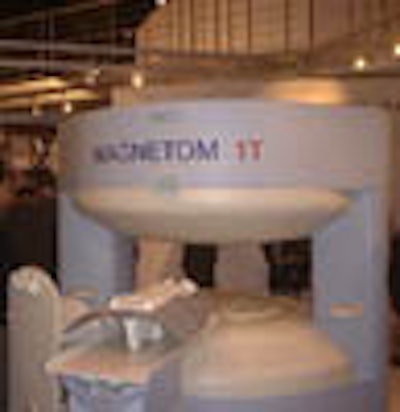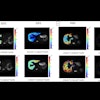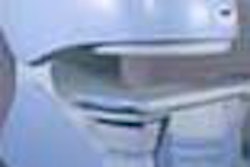
MRI vendors have begun to push the envelope of superconducting technology in their quest to commercialize new scanners that offer the convenience of open design with the image quality of supercon magnets. One of the companies pushing the hardest is Siemens Medical Systems of Iselin, NJ, which has developed a 1-tesla superconducting open magnet.
Siemens introduced the new scanner, which does not yet have a product name, as a work-in-progress at last year's RSNA meeting in Chicago. Although only a mock-up was displayed on the exhibit floor, the company has developed a working prototype that has produced clinical images, according to Siemens executive John Pavlidis. Pavlidis, formerly vice president of Siemens' MR division, recently was promoted to lead the company's ultrasound business.
The new system uses an actively shielded iron-core vertical-field design, a departure from most superconducting scanners, which use air-core designs. The iron core is necessary to achieve the higher field strength, Pavlidis said. The scanner's vertical field means that containing the fringe field is more difficult, requiring active shielding. The scanner also uses a two-post configuration, giving radiologists easy access to patients.
Most open scanners introduced to date have emphasized the patient-friendly features of the systems, rather than their ability to conduct high-end studies. But Siemens hopes to make available a full range of advanced imaging applications on the new system, including diffusion-perfusion imaging and contrast-enhanced MR angiography.
"We wanted to explore the openness and patient comfort benefits of open configurations, while keeping benefits of 1 tesla, such as image quality, speed and range of applications," Pavlidis said.
The 1-tesla open scanner will also feature Siemens' new integrated panoramic phased-array coils, which were first introduced in 1997 on the company's Harmony and Symphony high-field scanners. These coils enable radiologists to position multiple gradient coils around the patient at once, and switch between the coils using software. When coupled with the company's new MRease acquisition software, the new technologies should enable users to complete exams much more quickly, Pavlidis said.
The new scanner is an impressive offering, but Siemens is not the only firm targeting the open superconducting segment. Toshiba America Medical Systems of Tustin, CA, introduced the first commercially available open supercon in 1996 when it debuted the 0.35-tesla Opart. Toshiba had the market to itself for several years, until a raft of open supercon designs appeared last fall.
MRI heavyweight GE Medical Systems generated probably the most interest with its introduction of the Signa OpenSpeed scanner in November. The system features a 0.7-tesla magnet and other enhancements that GE hopes will enable it to finally achieve success in the open MRI niche.
While the GE system operates at a lower field strength than the new Siemens scanner, the Waukesha, WI, vendor does have an advantage in that it is already shipping OpenSpeed units. Siemens estimates that shipments of its open supercon are 15 months away.
Pavlidis believes that the arrival of superconducting magnets will probably create a new premium niche in the open segment, rather than push out less expensive non-supercon magnet designs. The company's new system will probably sell for $1.5 million to $1.6 million, a significant premium over the company's non-superconducting system, Magnetom Open viva. But Siemens believes that many imaging departments will opt for the increased flexibility and image quality of the more expensive scanner, despite the higher price tag.
"This product will have a key role in the market," Pavlidis said. "On the other end, we see a continuing demand for low-field (open scanners) because of the price difference."
By Brian Casey
AuntMinnie.com staff writer
February 14, 2000
Copyright © 2000 AuntMinnie.com



.fFmgij6Hin.png?auto=compress%2Cformat&fit=crop&h=100&q=70&w=100)




.fFmgij6Hin.png?auto=compress%2Cformat&fit=crop&h=167&q=70&w=250)











